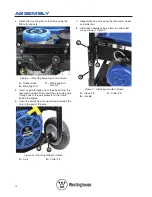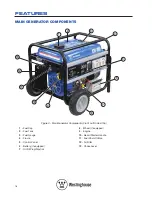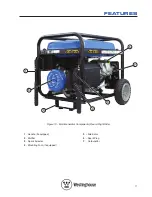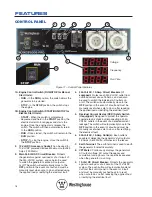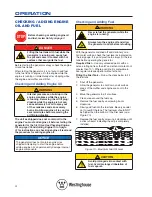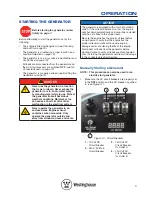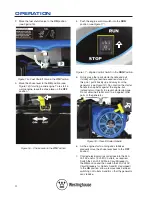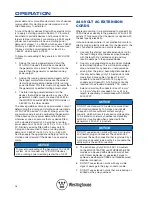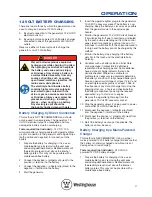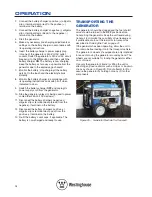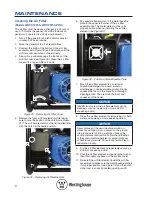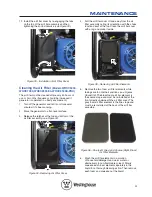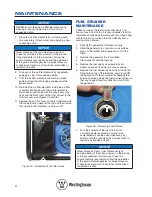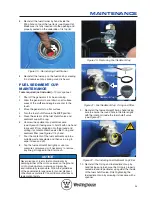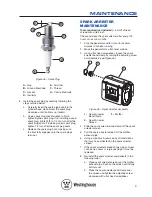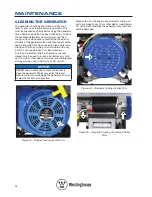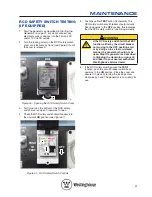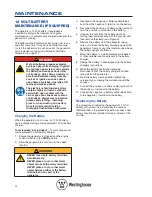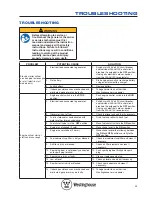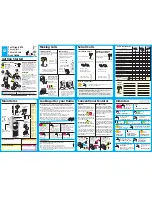
28
OPERATION
2. Connect the battery charger’s positive (+) alligator
clip or terminal clamp (red) to the positive (+)
terminal on the battery.
3. Connect the battery charger’s negative (-) alligator
clip or terminal clamp (black) to the negative (-)
terminal on the battery.
4. Start the generator.
5. Make any necessary pre-charging adjustments or
settings on the battery charger in accordance with
its operating instructions.
6. Insert the battery charger’s power supply plug
into one of the generator’s 240-Volt AC outlet
sockets. Switch the generator’s 240-Volt AC circuit
breaker(s) to the ON position and then switch the
battery charger ON. The battery is now charging.
Keep the battery as far away as possible from the
generator due to the explosive gas hazard.
7. Monitor the battery; stop charging if the battery
gets hot to the touch and the electrolyte boils
violently.
8. Monitor the battery charger in accordance with
its operating instructions and switch it off when
indicated to do so.
9. Switch the battery charger OFF and unplug its
power supply cord from the generator.
10. Stop the generator unless it’s being used to power
some other 240-Volt AC device(s).
11. Disconnect the battery charger’s negative (-)
alligator clip or terminal clamp (black) from the
negative (-) terminal on the battery.
12. Disconnect the battery charger’s positive (+)
alligator clip or terminal clamp (red) from the
positive (+) terminal on the battery.
13. Re-fit the battery’s vent caps, if applicable. The
battery is now charged and ready for use.
transPorting tHE
gEnErator
The generator should be stopped and the fuel shutoff
valve should be turned to the OFF position before
transporting the generator. Keep the unit level during
transport to minimize the possibility of fuel leakage or,
if practicable, drain out the fuel prior to transport as
described in Draining the Fuel on page 41.
If the generator has been operating, allow the unit to
cool down before loading it onto the transport vehicle.
The generator’s wheels (if equipped) are only intended
for ease of moving the generator around by hand. The
wheels are not suitable for towing the generator either
on or off-road.
Use only the generator’s frame for lifting the unit or
attaching any load restraints such as ropes or tie-down
straps as shown in Figure 25. Do not attempt to lift or
secure the generator by holding onto any of its other
components.
Figure 25 – Generator Restraint for Transport
Summary of Contents for WHXC3750
Page 4: ...4...
Page 55: ...55 NOTES...

